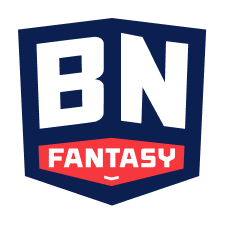In case you didn’t know, “sharps” aka wiseguys are professional bettors with long track records of success.
They don’t bet games based on bias or gut instinct. Instead, they are 100% analytical and value-driven.
Wiseguys bet numbers, not teams. When they place big wagers on a game, they force bookmakers to move the lines.
By using the betting tools available at The Action Network and Sports Insights, we can track how sharps are affecting betting lines for every NFL game.
So what are the wiseguys betting on Championship Sunday?
>> All odds as of 1:30 p.m. ET. on Saturday. Download The Action Network App to get real-time college basketball odds and track your bets
Betting Terms to Know
Steam Move: Sudden, drastic and uniform line movement across the market caused by an overload of sharp action from respected players.
Reverse Line Movement: When the betting line moves in the opposite direction of the betting percentages. It’s a top smart money indicator.
Line Freeze: When one side is getting heavy betting, but the line won’t budge, indicating sharp liability on the other side.
Juice: The tax or commission that bettors must pay sportsbooks in order for them to accept your wager. A -115 juice means a bettor would have to wager $115 to win $100.
Sharp Report: New England Patriots at Kansas City Chiefs
- Kickoff: 6:40 p.m. ET | CBS
Sharp angle: Over (moved from 58.5 to 54 to 56)
Analyzing line movement isn't as simple as comparing the opening number to the current number. Knowing how, when and why a line moved is critical to deciphering how sharps are betting a game.
You won't find a better example of this than the AFC Championship game over/under.
The total opened at an incredibly high 58.5. Initial weather reports forecasted an "arctic blast" at Arrowhead Stadium with temperatures hovering at zero degrees, making it one of the coldest playoff games in modern playoff history.

As a result of this forecast, the total dropped bigly from 58.5 down to 54. Why? Because the public was pounding the under, expecting a low scoring "Ice Bowl." We know this was purely public betting (not a result of sharp action) because not a single steam or reverse line move was triggered on the under.
However, later in the week the forecast improved, with temperatures rising to the mid-to-high 20s. As soon as word got out that the "Arctic Blast" was no more, sharps immediately hammered the over.
Using our Sports Insights Bet Signals, we noticed a wave of smart money hit the over at 55.5, triggering a market-wide steam move that forced oddsmakers to adjust the total up to 56.
Why do sharps love the over so much? Sure, the improved weather and value of getting a better number are big factors. However, seasoned wiseguys also know that "cold overs" are a hidden gem in the over/under playbook.
Conventional wisdom says that when it's cold, the under hits at a high rate. On the surface this makes total sense. The players' hands are frozen, making it harder to throw and catch the ball. The football itself is hard as a rock, leading to missed kicks. And of course, the offense and defense just wants to get off the field and throw on their coats and stand next to the industrial heaters.
However, this just isn't the case.
Since 2003, when the temperature is less than 30 degrees the over has gone 113-79 (58.9%), winning +27.89 units with a 14.4% ROI (regular and postseason combined).
It's also important to remember that oddsmakers don't set lines in a vacuum. They will adjust the line with public perception in mind. In this case, sportsbooks know that Average Joes will overreact to the cold weather forecast, which means they will shade the lines toward the under. This forces recreational bettors to take an overpriced, artificially deflated number, while also providing sharp over bettors increased value.
In addition to the "cold over" trend, sharps also know that Championship Sundays have historically been a profitable time to bet overs in general.
Since 2003, the over has gone a combined 17-10 (63%) in the AFC and NFC Championship games.





































































